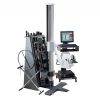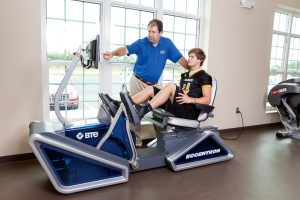
Customer Testimonials in a Fresh Light: How to Use Them to Fuel Your Clinic’s Business
Practice ManagementWhile physician referrals may account for a large portion of your new patient acquisition, there is ample opportunity for your clinic to use testimonials to more proactively drive new business and improve overall patient retention.
“Don’t just take our word for it, hear what our customers have to say.” Sounds familiar, right? This marketing line may be overused and hackneyed, but the practice it speaks to is nothing of the sort. The “satisfied customer testimonial” remains one of the most powerful marketing strategies for attracting new patients to your clinic and retaining their loyal business over time – provided that you create and use your testimonials effectively.
Whether consciously or not, today’s consumers look for social influence in all areas of their lives – about how they dress, what products they buy, and even which healthcare providers they choose. It doesn’t matter whether that influence comes from friends or strangers. What matters is that they’re seeing evidence from peers – in this context, other patients – that the choice they’re about to make is the right one.
In fact, according to the most recent Nielsen Global Trust in Advertising Survey, more than eight-in-10 respondents (83%) will trust the recommendations of friends and family, while two-thirds (66%) will trust those from people they don’t even know.
While physician referrals may account for a large portion of your new patient acquisition, there is ample opportunity for your clinic to use testimonials to more proactively drive new business and improve overall patient retention.
What Makes a Testimonial Convincing?
It’s fairly easy to get a short quote from a satisfied patient and slap it up on your website, but taking this tact will yield you very limited returns. To grab and keep the attention of your target audience, a testimonial must have substance in terms of both content and presentation.
Let’s start with content. A good testimonial isn’t fluffy. It doesn’t convey vague, complimentary statements about someone liking your practice and the people in it. Instead, the quote should focus on one specific point of value a patient appreciates about your clinic. This follows a very simple, repeatable set of questions: 1.) What do you appreciate most about our clinic? and 2.) Why is this important to you?
Contrary to what some might think, these points of value don’t always have to focus on the actual services you provide. The reason is that your patients’ experience – and the things they value about it – won’t be limited to the PT services they receive. A legitimate and effective testimonial may be something along the lines of, “I’m extremely busy juggling a full-time job and three kids (and their schedules!). The receptionists here are always so friendly and patient with helping me find appointment times. And they never make me feel bad for rescheduling!”
Of course you will also want testimonials that address a range of injuries and the various ways your clinic and practitioners are helping patients overcome them. The goal is to produce numerous testimonials representing your clinic’s various points of strength.
The Keys to an Effective Testimonial Are:
- Specificity. Don’t try to cover too much or the main point will become diluted. In each testimonial, cover only one specific thing the patient values about your clinic and why that point of value is important to him or her. It’s hard to cut other good stuff, but it’s worth it to shine a spotlight on one strength at a time.
- Relatability. You get people’s attention when they can quickly spot themselves in the material you’re presenting. Start with an identification of the person and his or her challenge in a way that you know others will relate. For example, “My desk job keeps me sitting all day and has led to recurring back problems. My PT at Momentum got me out of pain and then taught me great strategies for staying that way. I’m forever grateful.” Anyone who works at a desk will perk up and take notice of a quote like this. Consider the different segments of your patient base you can appeal to in your testimonials.
- Length. Keep it short. Depending on your format, an effective testimonial can be just two or three sentences, like the examples above. If your format calls for it, longer is okay, but don’t exceed 150 words or you risk losing your readers. Stay focused and concise.
- Tone of voice. A testimonial should sound like someone talking to a trusted friend. While it’s important to edit a quote for brevity and clarity, strive to maintain the speaker’s natural, genuine tone. It’s a refreshing change from typical marketing-speak.
And then there’s presentation. This is where clinics miss a great opportunity. It’s not enough to use a text-only quote or to provide sparse information about the speaker. All testimonials should include a high-quality image of the speaker along with his or her name. In the case of clinics, it can also be helpful to identify something about the person that is relevant to his or her treatment. Go out on a limb and have fun with this part. For example, “Joe Knealy, desk jockey at Dealer.com,” “Emma Watson, competitive snowboarder.” “Julian Spooner, dancer.” All of these elements help to both legitimize your testimonials (They come from real people!) and make them more relevant to your audience (I’m a dancer, too!).
How to Get Good Testimonial Quotes
As you can see, an effective testimonial is not garden-variety feedback jotted down on a customer survey. This brand of substantive quote is best achieved by talking with a customer in person.
To get started, identify your “raving fans.” Who are the patients in your clinic who have returned over time? Who speaks highly of their therapists and refer others to you? Who linger to chat with staff, or send holiday cards to the office? Identify these folks and note their next appointment times. Be available then to ask, in person, whether they’d be willing to provide a testimonial quote. If yes, schedule a follow-up time to talk, in person or by phone, for 10 minutes. Write down or record what they say. Tell them up-front that you’ll be editing the quote for readability and that you’ll run it by them for approval. Then ask the two simple questions: 1.) What do you appreciate most about our clinic? and 2.) Why is this important to you? Add any follow-up questions for clarity, and then close by asking basic personal questions for use in the quote attribution: What do you do for work? What activity were you doing when you were injured?
Keep in mind, this is marketing and not journalism. It’s acceptable to edit each quote to meet your length and tone requirements as long as you seek final approval from the speaker. Lastly, look for a variety of stories and perspectives from your candidates and then zero in on the ones that tell the stories you want to tell about your clinic.
Now, this may be the biggest challenge for clinics, but it’s imperative to invest in good photography. If you’re lucky, maybe you have a hobbyist photographer on staff who can take a good shot of each speaker. If not, find a photographer close by who would be willing to work with you to make this piece as efficient and economical as possible. Either way, make sure the end product is high quality — good lighting, tight focus, consistent framing of your subjects (mid- or upper-torso and up), and tasteful color correction. But here’s the real secret to effective testimonial images: eye contact. A relaxed demeanor is important, too, but direct eye contact is that arresting element that will catch your audience’s attention.
How to Use Testimonial Quotes
In short, use them any way you can. Place them prominently throughout your website. Include them on all print and electronic patient correspondence. But perhaps most importantly, use them for display advertising.
A testimonial ad campaign is a tremendous opportunity to convey your strengths and what makes your clinic unique and successful – essentially, your brand. And for the reasons cited above, using your customers as the spokespeople is more effective than a typical self-promoting ad.
Invest in graphic design and marketing expertise to create a single-page layout that displays your satisfied patient, his/her quote, the speaker attribution, and your clinic’s contact information. Crop tightly into your patient’s photo to make the most of that direct eye contact. And then beyond running the ads in regional publications (as you see fit), blow them up to poster size and rotate them through your office. New and returning customers will see them and be assured that the decision they made to choose your clinic was the right one.
Update April 2018: Interested in clinic marketing? Check out Beth’s next article on gauging your clinic’s future growth with the Net Promoter Score!
Beth Renaud
Magazine Editor, Content Marketer, and Freelance Writer
Connect with Beth on LinkedIn





